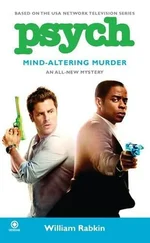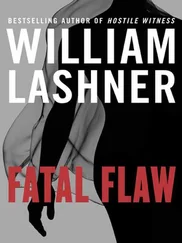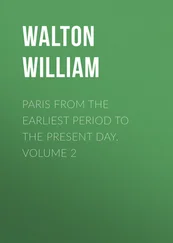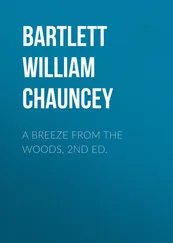William Rabkin - A Fatal Frame of Mind
Здесь есть возможность читать онлайн «William Rabkin - A Fatal Frame of Mind» весь текст электронной книги совершенно бесплатно (целиком полную версию без сокращений). В некоторых случаях можно слушать аудио, скачать через торрент в формате fb2 и присутствует краткое содержание. Жанр: Полицейский детектив, на английском языке. Описание произведения, (предисловие) а так же отзывы посетителей доступны на портале библиотеки ЛибКат.
- Название:A Fatal Frame of Mind
- Автор:
- Жанр:
- Год:неизвестен
- ISBN:нет данных
- Рейтинг книги:3 / 5. Голосов: 1
-
Избранное:Добавить в избранное
- Отзывы:
-
Ваша оценка:
- 60
- 1
- 2
- 3
- 4
- 5
A Fatal Frame of Mind: краткое содержание, описание и аннотация
Предлагаем к чтению аннотацию, описание, краткое содержание или предисловие (зависит от того, что написал сам автор книги «A Fatal Frame of Mind»). Если вы не нашли необходимую информацию о книге — напишите в комментариях, мы постараемся отыскать её.
A Fatal Frame of Mind — читать онлайн бесплатно полную книгу (весь текст) целиком
Ниже представлен текст книги, разбитый по страницам. Система сохранения места последней прочитанной страницы, позволяет с удобством читать онлайн бесплатно книгу «A Fatal Frame of Mind», без необходимости каждый раз заново искать на чём Вы остановились. Поставьте закладку, и сможете в любой момент перейти на страницу, на которой закончили чтение.
Интервал:
Закладка:
“Should I tell you who did it, or wait until we’ve got all the suspects together?” Shawn said.
“Are you actually going to pretend you know who committed this terrible crime?” Lassiter said.
“Not yet,” Shawn said. “But I never know when the spirits are going to speak to me. Or what they’re going to say. Right now they’re so busy telling me how good I look in a tuxedo, they don’t seem to have time for anything else.”
“Just get out of here, Spencer, and let the grown-ups do our jobs,” Lassiter said. “I promise you we’ll bring you back when it’s playtime.”
Shawn turned hopefully to O’Hara. “It’s always playtime for me,” he said. “Want to come?”
“Not now, Shawn,” she said. “You and Gus run along.”
“You don’t know what you’re missing,” Shawn said. “Gus?”
But Gus was still staring down at the body on the floor. And then he followed the professor’s eyes back to the painting. A long-haired woman stood in the center of the picture, her arms outstretched. Behind her were a couple of knights in armor. She faced what must have been a throne, although it was seen only from behind. And leaning against that throne was a sword.
A long, wide sword.
Just like the one sticking out of Filkins’ body.
Chapter Seven
In his long career on the force, Carlton Lassiter had sat across interrogation room tables from hundreds of junkies, winos, and meth-heads, and he knew all the tells. The constant fidgeting, the eyeballs shooting to the exit door, the beads of sweat appearing at the hairline: all these were signs that the interview subject cared only about getting out of the room to get his next fix as fast as possible.
But Lassiter knew Langston Kitteredge wasn’t a junkie, and he wasn’t jonesing for a dime bag or a dollar bottle. What he wanted-what he kept claiming he needed-was to see that painting again.
Lassiter had explained over and over again that the crime scene techs were scouring the gallery for forensic evidence, and that as soon as they were through he would personally drive the professor back to the museum and they could look at the picture together. Every time he said this, Kitteredge settled down and started back in on his story. But before more than a couple of minutes had passed, he’d start fidgeting again.
At first Lassiter had been pleased at the professor’s eagerness to cooperate. Once everyone in the gallery had realized that there seemed to be some kind of connection between the painting hanging on the museum’s wall and the body lying on its floor, the detective knew he needed a little background information on the picture.
Since the museum’s executive director seemed to be slipping into a state of shock, Lassiter sent him off with the paramedics, who had arrived to make sure none of the museum patrons were similarly suffering, and turned to the only other person in the place who claimed to have a clue about the painting.
Kitteredge seemed happy to be asked. At least, he did until Lassiter made it clear that the conversation would have to take place at the police station. The professor would wait for him there while he finished up with the crime scene.
It was another hour before Lassiter was able to turn the museum gallery over to the techs and race back to the station to talk to Kitteredge. In that time he’d learned a few details about the crime that made it look even more puzzling than he had originally imagined. For one thing, the sword sticking out of the victim’s chest was not the murder weapon. His throat had been slit with a much smaller blade, and only when he was dead had the killer used the sword. That explained why there had been so much blood on the floor, but it raised several questions of its own. Like why use a knife when you have a sword?
Even questions that should have had easy answers turned out not to. The sword was, as Kitteredge had said, part of the museum’s collection, but while the museum staff were busily reviewing their records, no one could seem to figure out exactly where the weapon had been before tonight, or who might have moved it, or when. And while a major art museum is usually as well surveilled as any public institution short of an international airport, all the security cameras in this gallery had been turned toward the walls. When Lassiter asked when and why this had been done, he learned it had been earlier in the day, on the specific instructions of the victim.
The crime scene techs were scouring the gallery, but there was almost no chance they would turn up any usable forensics. Between the removal of the last exhibit and the installation of the new one, dozens of workers had tramped through the room, all dripping DNA wherever they went. The only hope was to find something on the sword, but that seemed to be as clean as on the day it was forged.
That made this interview with Kitteredge even more crucial than Lassiter had originally thought. Lassiter had asked the professor to take a little time to think through the most important information about the painting and consider any way in which it might inspire a killer. When he got back to the station, Lassiter asked the professor if he’d had any thoughts on the subject.
That was five hours earlier.
He hadn’t asked another question since. He hadn’t had a chance.
Kitteredge started off with the story of the painting’s acquisition by the museum. Before he began, he said it wouldn’t take much time, as he’d written out a brief version to deliver to the patrons at tonight’s event. And it might not have, if he’d been able to stick to a single point. But early in the proceedings he’d realized he had to clarify one tiny bit of information about the nature of the art market in nineteenth-century England before he could adequately explain how odd it was that this particular picture came to be held by a private owner without ever having been publicly exhibited. And as soon as he started down that path, he discovered that Lassiter did not have a complete understanding of the place of the Royal Academy of the Arts in relation to the marketplace, and that in turn led him to a parenthetical disquisition on the question of George III’s historical role as patron of the arts. And the only interruptions in the lecture came when Kitteredge suggested again that it would really help if they could continue their conversation while looking at the picture.
Not that Lassiter was sitting quietly during this entire peroration. One of the skills necessary to detective was the ability to steer any conversation toward his desired goals, and Lassiter had always prided himself on his technique in this area.
But steering Kitteredge had roughly the same effect as nudging a supertanker with a stick. He barely seemed to notice the interruption, except occasionally to say he’d get to that point in just a moment.
After a long tour through the politics of the art world in eighteenth-century England, Kitteredge finally returned to the general period of the painting’s conception. Since he still had another hundred and fifty years to go before the painting would make its appearance on the wall of the Santa Barbara Art Museum, Lassiter excused himself to use the bathroom, grab another cup of coffee, and bang his head against the wall until the pain on the outside began to even out the throbbing that came from within.
He’d stayed out of the interrogation room for as long as he could possibly justify, and then kept away a little longer. He checked through phone messages on his desk, and when he couldn’t find any that needed answering in the middle of the night, he checked several other detectives’ desks.
Now he was out of excuses. He’d given the obvious one away to his partner when he told her to look into the victim’s life, see if she could come up with any plausible motives for murder, and check his movements for the past couple of days. There were financial records to dig through; relatives, friends, and possibly lovers to contact; enemies to sniff out and track down. They’d have to interview all of the curator’s colleagues at the museum, and at other museums in case there was interinstitution rivalry. It seemed ludicrous to think that someone who had spent his entire life looking at pretty pictures could have the gumption to commit a murder like this, but if the new acquisition was as significant as Kitteredge believed, was it impossible to consider that a competitor might have thought that Filkins had crossed some ethical line in snagging it and felt a need for revenge?
Читать дальшеИнтервал:
Закладка:
Похожие книги на «A Fatal Frame of Mind»
Представляем Вашему вниманию похожие книги на «A Fatal Frame of Mind» списком для выбора. Мы отобрали схожую по названию и смыслу литературу в надежде предоставить читателям больше вариантов отыскать новые, интересные, ещё непрочитанные произведения.
Обсуждение, отзывы о книге «A Fatal Frame of Mind» и просто собственные мнения читателей. Оставьте ваши комментарии, напишите, что Вы думаете о произведении, его смысле или главных героях. Укажите что конкретно понравилось, а что нет, и почему Вы так считаете.












